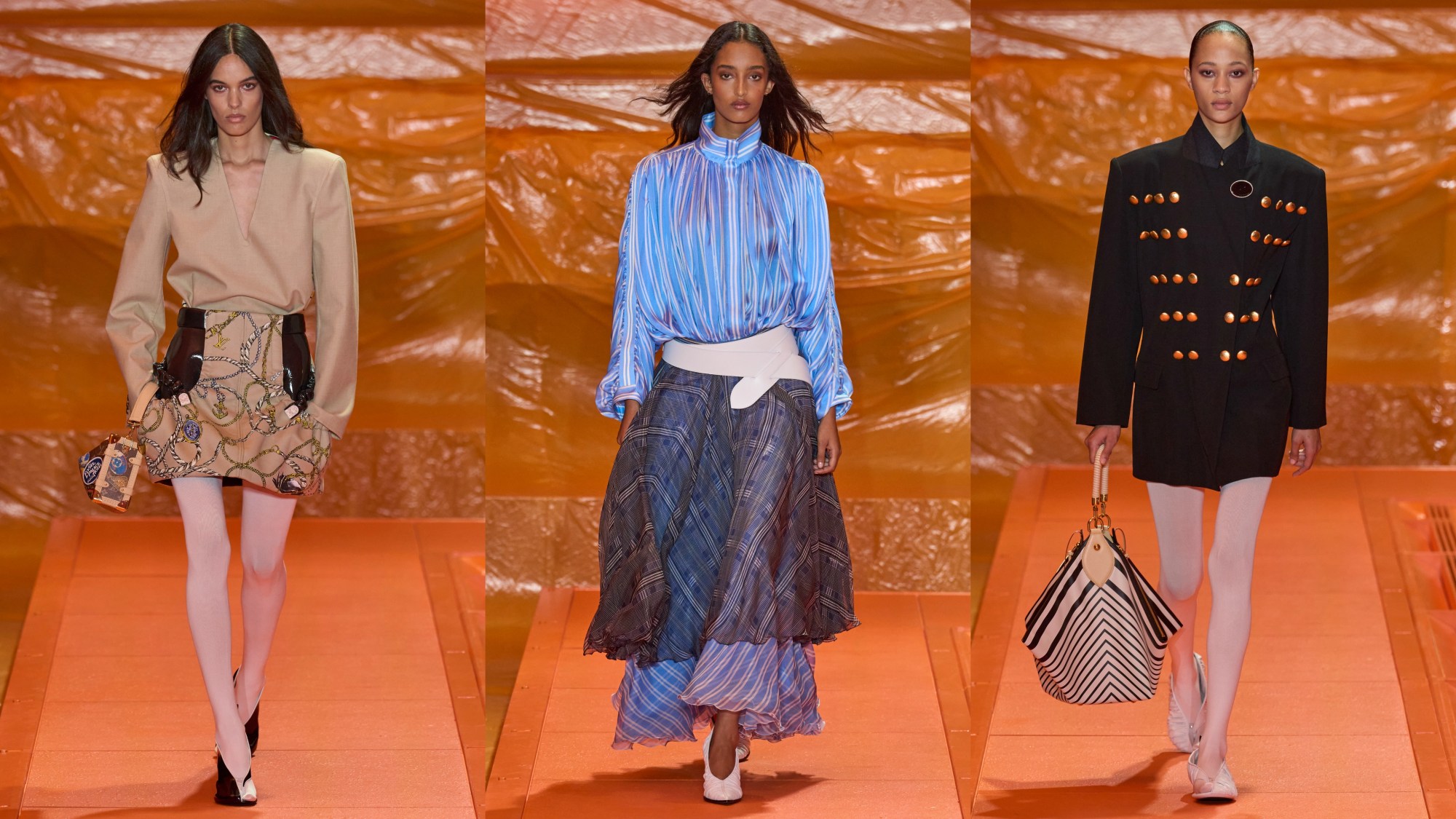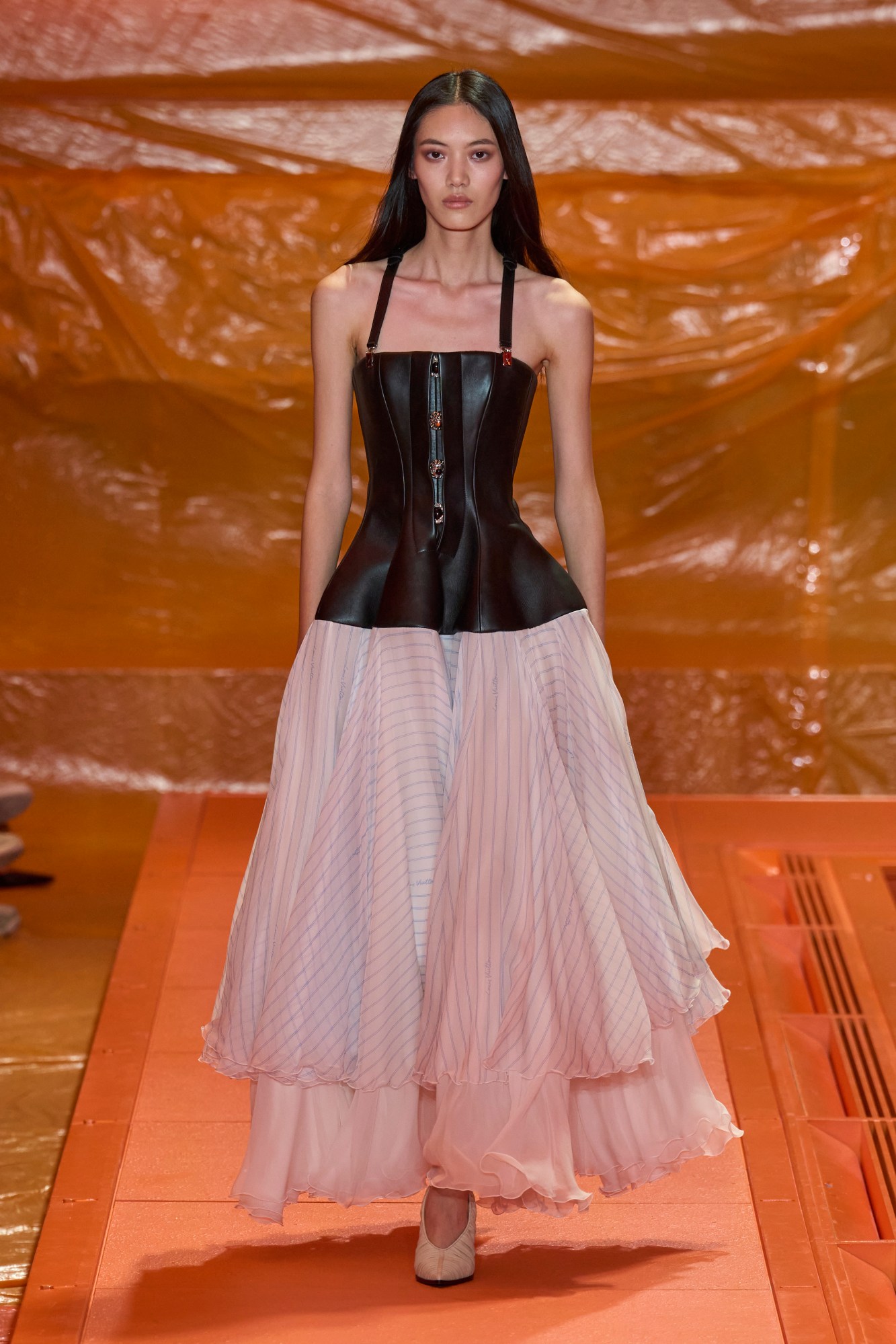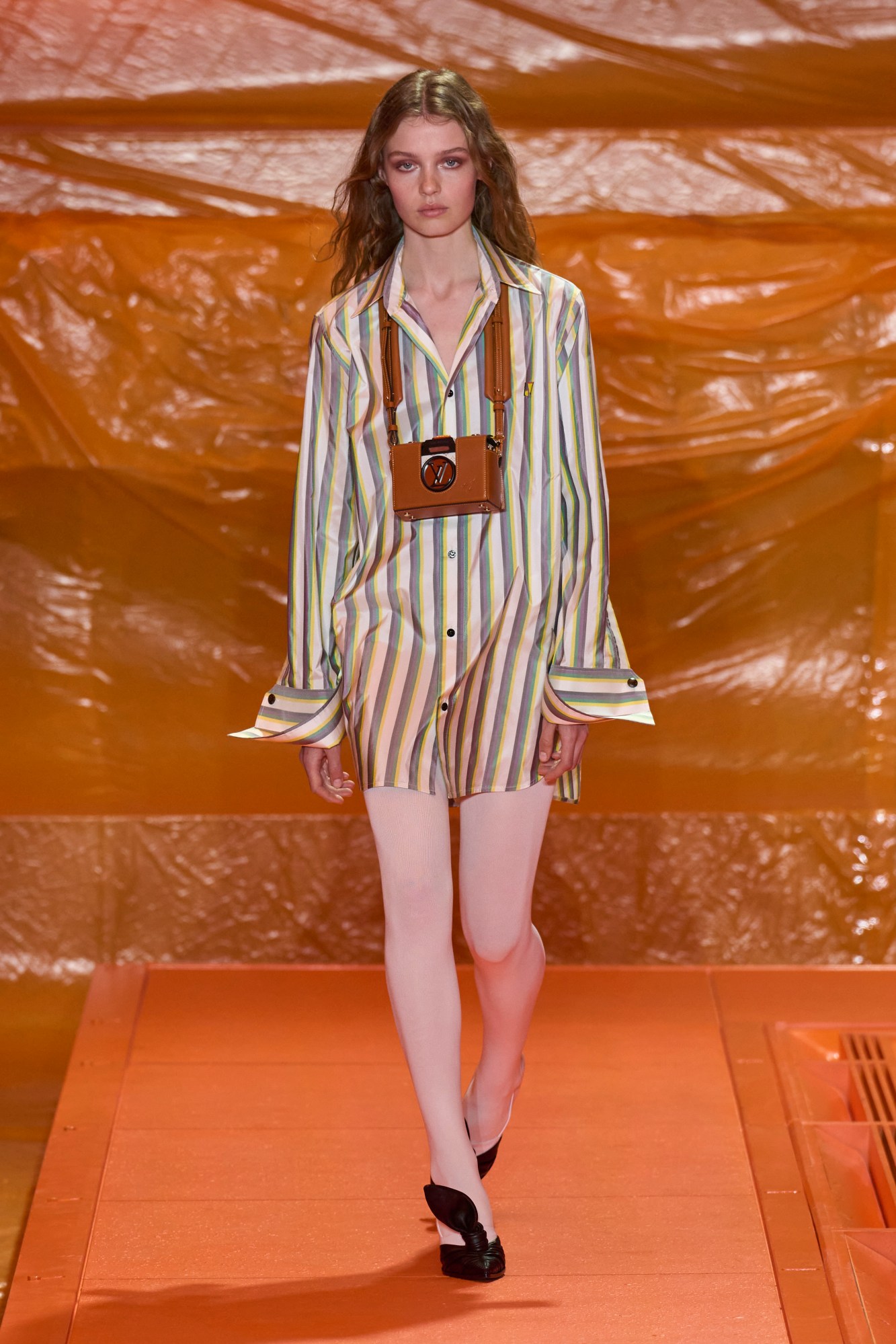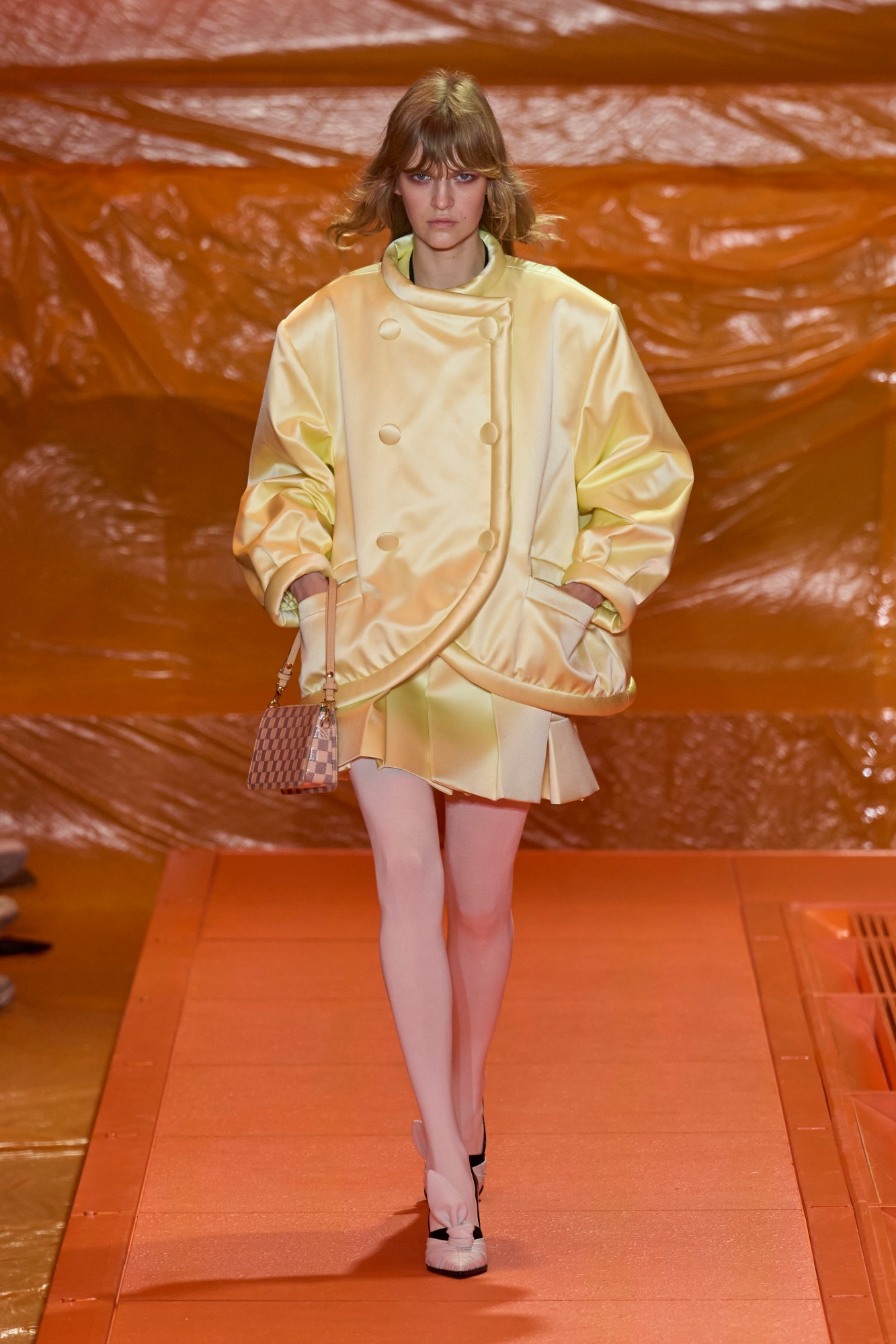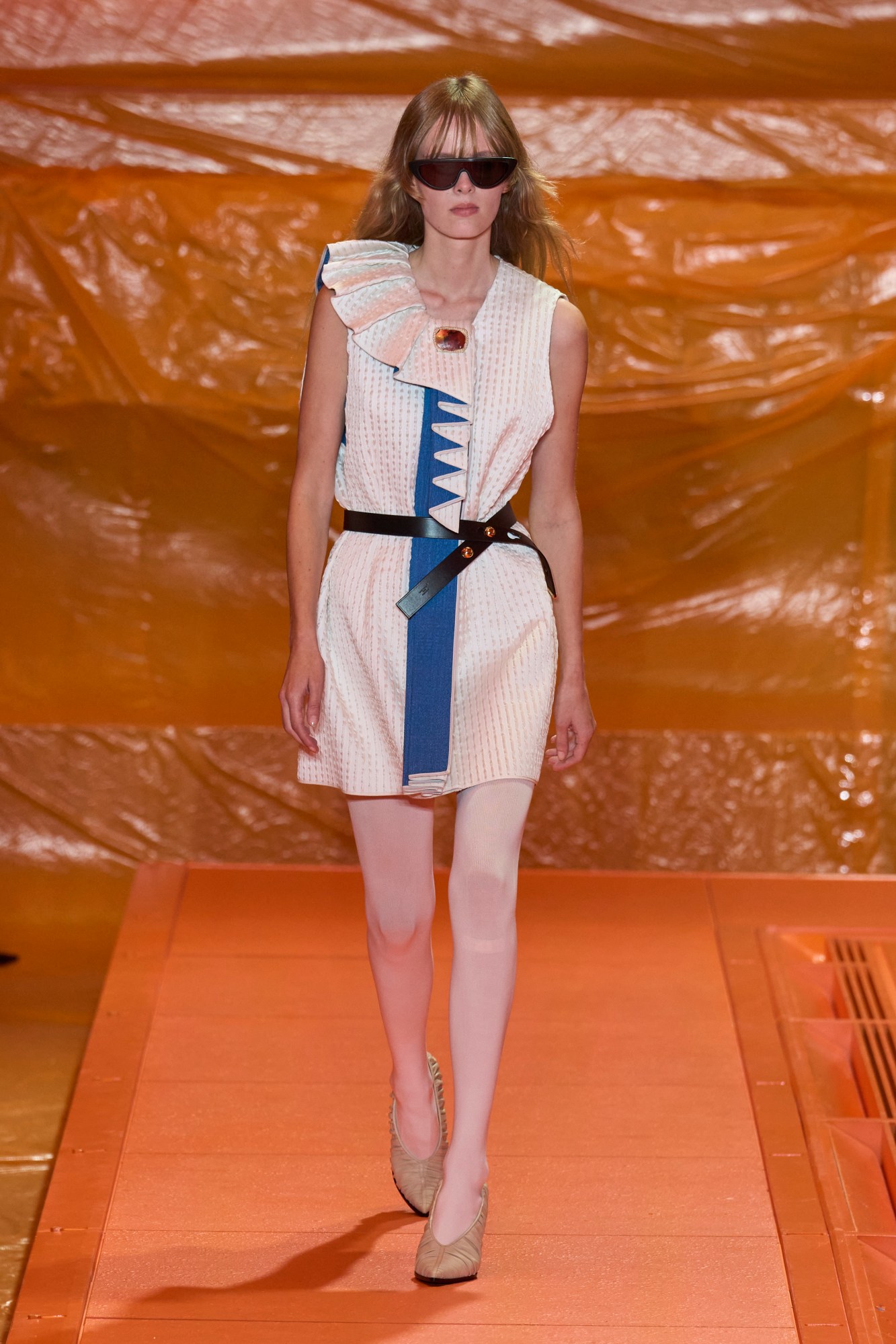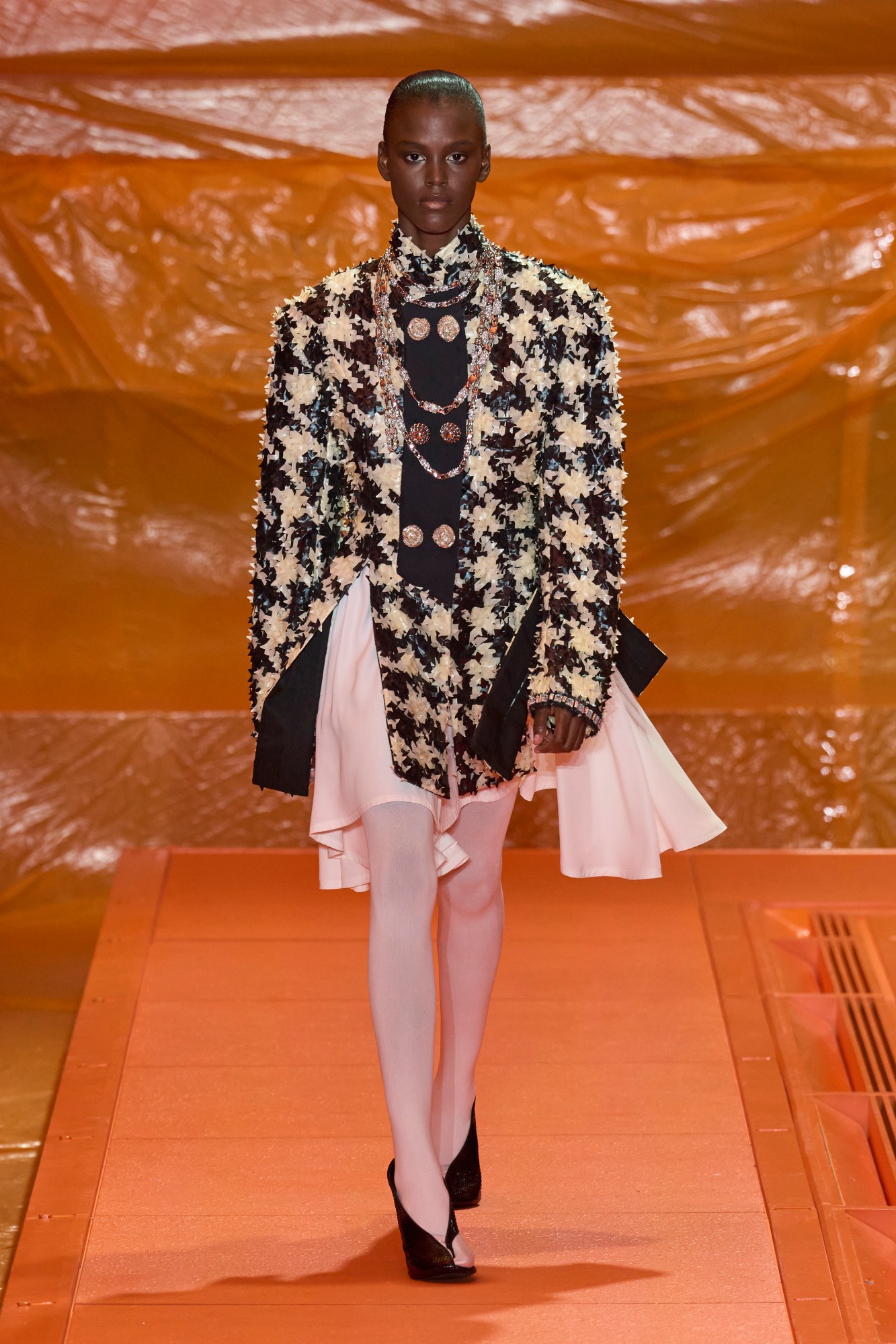Louis Vuitton’s shows are usually held in the monumental surroundings of the Louvre or Musée D’Orsay, suggestively placing their collections in the halls that are home to some of history’s greatest artworks. This season, however, Nicolas Ghesquière chose to stage a show in the yet-to-be-opened space within the Louis Vuitton store on the Champs-Élysées, which is still under construction. The vast flagship boutique that it sits within – recently towered over by a giant sculpture of Japanese artist Yayoi Kusama — has queues far longer than any government-owned institution. Make of that what you will. Inside the show space, the walls were wrapped in tangerine-coloured plastic with matching mid-century lamps hanging from the ceiling, designed by James Chinlund to look like the inside of a hot air balloon.
After all, Louis Vuitton — once just a luggage maker — is a brand with roots in the idea of travel (the scaffolding outside the show venue is designed to resemble a giant steamer trunk). Whether it’s space travel, time travel or even journeys undersea, in the case of the house’s recent Cruise collection, Nicolas has often abstracted the idea to create collections that feel like a journey through different ideas, eras, and archetypes. His SS24 show yesterday was equally adventurous, starting off with a handful of looks with double-tiered skirts, crafted from mousseline and charmeuse — light, diaphanous, slightly ruffled at the hem — worn with voluminous leather bombers and silky blouses, and fasted by a thick low-slung belt.
Those opening looks marked a new, more bohemian silhouette for Nicolas (ardent fans, don’t worry, there were Modish A-lines later). Lightness seemed to be on the agenda. Elsewhere, there were draped off-the-shoulder blouses in bright yellow and fuchsia, roomy pyjama-style shirts worn over white tights and knotted-leather pumps, roomy double-breasted tailoring and wide-leg taffeta trousers in candy-striped pink. Altogether, the collection looked like a cast of individuals, girls dressed in better versions of the clothes they may have foraged for at flea markets or thrift stores. Nicolas’ collections are weird and wonderful, masterfully teetering the lines between good and bad taste. They’re interesting to look at, difficult to understand, and not an easy pill for everyone to swallow — or indeed wear (which is pretty remarkable when you look at the cross-section of masses queueing outside the stores). Most importantly, though, in a sea of anodyne clothes on catwalks everywhere, at least they’re not boring.
